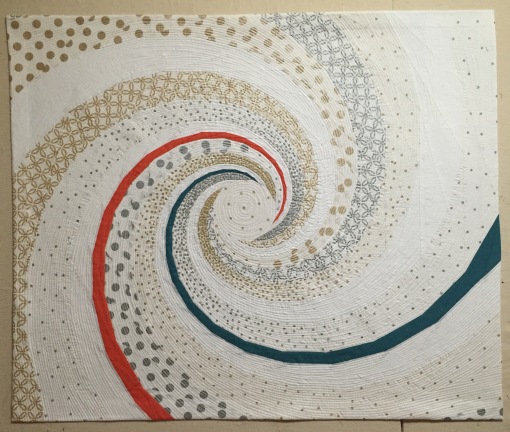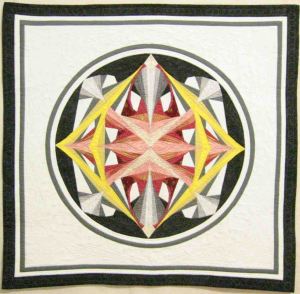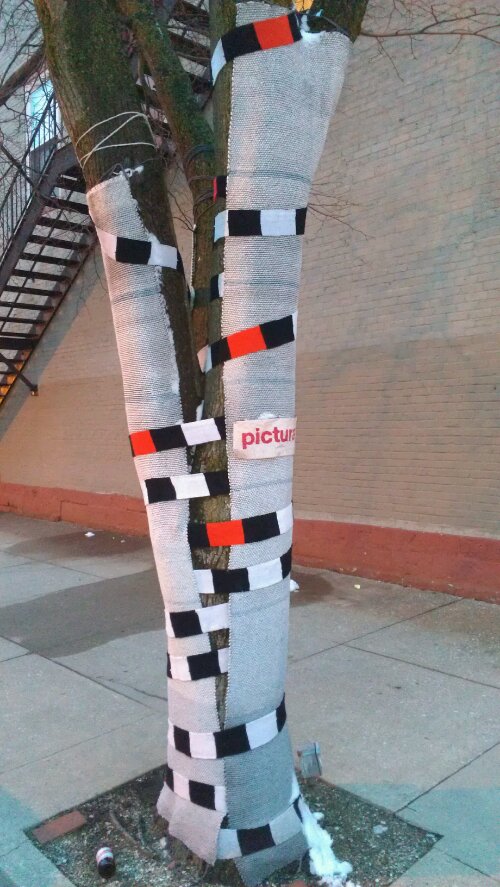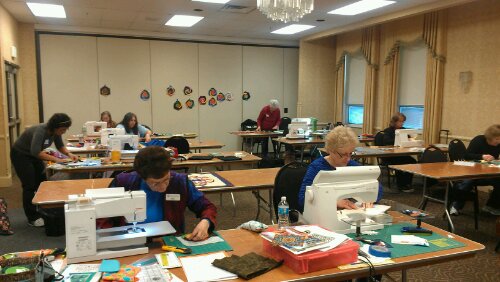
5/2015: Ignore pretty much everything here (except the waffle recipe) and just go buy Flour Water Salt Yeast by Ken Forkish. Worth more than pretty much anything I have to say here!
————————————
Well, Spiros, my sourdough experiments continue. After failing miserably on my last batch, producing a loaf that would knock out a football player, I consulted the internet and learned some key pieces of infos. Here’s a link to the page on allrecipes.com that helped me.
The first thing was that on the first batch I did everything right — by mistake! My roommate accidentally froze the sourdough starter, so I thawed it at room temperature and then fed it to get it going again. (I found out that this is called “proofing” the starter.) Once it was bubbling and happy again, I added some fresh yeast and did a poolish. (That’s when you mix half the flour with the sourdough and let it sit for a day or so to rev up the yeast before you mix in the rest of the flour and knead it.)
The second thing was that you have to feed a sourdough starter regularly — every day or two if you keep it at room temperature, once a week if you keep it in the fridge. No wonder the second batch bombed — the yeast had probably all starved to death.
I learned that you can make a sourdough starter using water or milk, or even make a wild yeast starter using the yeast that collects on the skins of grapes.
I learned that you should not use chlorinated water — use bottled or distilled because chlorine kills yeast — and you should not use metal containers or spoons — because metal kills yeast too.
So, I started 3 new sourdough starters: one using aerated water for liquid (let it sit uncovered for a day to let the chlorine evaporate), one using milk for liquid, and one – out of curiosity – using white wine for liquid.
Although most of the recipes I read added some fresh yeast to the mix in addition to the sourdough starter, I want to see if I can make a really good loaf of sourdough using only the starter. So, I sort of combined techniques from the recipe I have and another recipe I found on food.com.
I started them, then proofed them for 12 hours, then did a poolish for 18 hours. At this point, the water-based starter bombed. So, I kneaded the other two batches into loaves.
This is when I ran into trouble. I had to go out for the evening, and since the bread had already been sitting for 30 hours, I didn’t want to leave it out rising for another 6 or so. So, I put the dough in the refrigerator to keep it from rising until I got home. But I didn’t get home until midnight, and then I couldn’t warm up the dough enough to get it rising again. Finally, I warmed the oven a bit and left it sitting in there overnight in hopes that it would slowly rise and be ready to cook in the morning.
But then I had to leave at 9:00 in the morning and didn’t get home until 2:00. At this point it had been over two days since I started. The bread had barely risen enough to bake, but I couldn’t let it go any longer. I was pretty sure it was going to be unpalatably sour at this point, and it certainly wasn’t going to rise any more. As I turned on the oven I thought what the heck, they couldn’t be as bad as the last batch — at least they had risen some.
So I cooked them. They turned out extra sour and a bit heavy, but not unpleasant. I thought I would like the milk-based bread best, as I expected that the milk, in souring, would add to the tartness of the bread. In fact, in a blind taste test, both my roommate and I like the wine-based bread better. The milk one was flavorful, but had a bit of a “kick” at the end, while the wine one had a nice tang and a bit of sweetness to enhance it.
(Oh, and by the way, using bread flour makes a huge difference in the consistency. It has a higher gluten content than regular flour.)
Tomorrow I’m starting another batch. I’ve begun proofing the starter, and I’m going to skip the poolish and go straight to rising in the loaf, exactly the way it says in the recipe. This time, the whole process should take about 15 hours, rather than 50(!). It will be interesting to see how these loaves compare in flavor with today’s loaves.
In the meantime, here is a haiku I composed in honor of the valiant yeast that have died in the cause of my culinary science: 😉
scent of fresh bread –
the dying breath
of a billion yeast
Oh, and by the way, here are the hot pads I quilted on my new HandiQuilter using my Autumn Song fabric line that Blank Quilting re-released last year. Hot pads (and quilt-as-you-go blocks) are a great way to practice machine quilting. Just keep a stack of “sandwiches” by the sewing machine for whenever you have 15 or 20 minutes. Later you can bind them and give them away as gifts — everybody needs new hot pads now and then! Here are my instructions for making hot pads: http://spiromandalas.wordpress.com/hot-pad-pattern/ Enjoy!
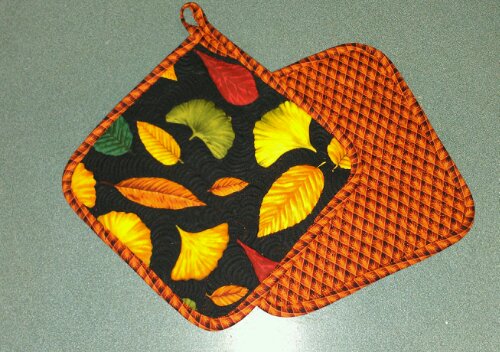
————————–
2/21/13: My friend Marguerita sent me this link to sourdough-making info: http://www.innerlodge.com/Recipes/Breads/Sourdough/index.htm which also contains her favorite recipe for sourdough pancakes: http://www.innerlodge.com/Recipes/Breads/Sourdough/PanCakes/pancakes.htm. Among other really important things I learned was this key piece of the puzzle: don’t over-knead the dough. Having tried the flip-and-fold method a couple of times now, I can vouch for it. Now I just have to learn to make a dough that is stiff enough to stand up into a nice, round loaf, yet still soft enough so that the yeast doesn’t have to fight too hard to rise it.
—————————-
3/21/13: Another key piece of info from my friend Pat Surra in Bloomington, IN, who shared her dad’s sourdough potato bread recipe with me. In the background to the recipe she mentions that her father made a “proofing oven” by putting a lightbulb inside a Styrofoam cooler. This kept the dough at an optimum temperature for rising. I discovered that if I turn on the light in my oven and set the bowl of starter or dough near it, the temperature is just right to keep the yeast happy and multiplying.
—————————-
4/23/13: Making sourdough bread again for the first time in several weeks. The last attempt rose too long and the dough flattened out because the yeast went inactive. I’ve learned from watching the starter proof that the yeast is most active about 4-6 hours after feeding it. After about 10-12 hours, the yeast has used up all the fresh food (in my case, flour and milk) and starts to go dormant again. You can tell because the foaminess of the starter starts to collapse and the layer of alcohol starts to form on the surface of the starter. So, there is definitely a question of timing with sourdough bread. For today’s loaf, here’s what I’m doing, and so far (5:55 p.m) the dough looks GREAT!
1. The day before: I proofed the starter for 24 hours because I hadn’t fed it for a couple of weeks (I was traveling and it was in the fridge). Proofing: I warm 1 cup milk in the microwave for 1 minute then mix in 1 cup all-purpose flour. I add this mixture to 1 cup sourdough starter in a glass bowl and whisk it to aerate. Cover the bowl lightly, turn on the light in the oven and leave the bowl in the oven with the light on for warmth. (I put a note on the switch that turns on the oven to remind me that the sourdough starter is in there, so I don’t accidentally turn on the oven with the sourdough starter in the oven — which would kill the starter, not mention melt the plastic lid to the bowl and possibly starting a fire.)
2. Bread-making day, 8:00 a.m.: I put half of the proofed starter back in the fridge and started my loaf with the remaining 1 cup of starter. I added 1 cup warm milk mixed with 1 cup all-purpose flour — this was my poolish. (Keep in mind that this means I’m beginning my bread with a starter that is already warm and active — not taking it out of the fridge and trying to use it cold.)
3. 2:30 p.m. (6 hours after starting the poolish): The poolish looks really bubbly and active. Yay! I mixed 1-1/2 cups bread flour into the poolish [NEXT TIME REMEMBER TO ADD THE SALT NOW!!!!], then poured the dough onto the kitchen counter and kneaded it just enough to mix in another 1/2 cup bread flour. That makes 2 cups of flour, which, in addition to the 1 cup I put in this morning, makes a total of 3 cups of flour for 1 loaf of bread). I put it back into the bowl with a couple of teaspoons of olive oil in the bottom: tuck the edges of the dough under, hold the tucked side and touch the top of the dough to the bottom of the bowl to oil it, then turn the dough over and put the tucked side in the bottom of the bowl – this oils the top of the dough so it doesn’t dry out while rising and keeps the dough from sticking to the bowl. This oil will work itself into the dough as I continue to develop it. At 3:00 I put the bread back into the oven with the light on (set the lid on the top of the bowl, but don’t seal it).
4. 4:00: The dough looks great — it doubled in volume in the last hour. Right on schedule! I kneaded the bread for exactly 12 folds, working in about 1/4 cup bread flour. I added another teaspoon of oil to the bowl and returned it to the oven with the light on.
5. 5:00: Ditto. (SHOOT! I just remembered that I forgot to add salt to the dough when adding the first flour! Will have to try to add it in during the final couple of rounds of kneading, I guess. Next time REMEMBER THE FREAKIN’ SALT!!!!!)
6. 6:00: Ditto, plus I added about 1 teaspoon of salt during the kneading by sprinkling the dough with the salt shaker between each fold. I hope this doesn’t slow down the yeast (salt kills yeast if it comes into direct contact with it). This dough is has been doing everything right up till now and I’m really looking forward eating to what could possibly be my first really beautiful loaf of sourdough bread!
7. 7:00: Last kneading – kneaded like the previous 3 times, adding salt like the last time. Formed a loaf and put it on the sheet with corn meal to keep the dough from sticking. A couple of cuts in the top of the dough and a spritz of water with a spray bottle. Put it in the oven with the light on and let rise until 8:00.
8. 8:00: Brushed the top with beaten egg, sprinkled with sesame seeds, put a baking pan in the bottom of the oven and filled it with boiling water. Turned the oven on to 400F, baked for 50 minutes.
————————-
5/5: After that last flat attempt at sourdough, I tried sourdough waffles, using the yeast-raised waffles recipe I got from London Bed & Breakfast in October 2012. Instead of the beginning yeast mixture I used 1/4 cup of sourdough starter. They didn’t cook up all that well until the third one — between #2 and #3 I realized I left out the baking soda and mixed it in. #3 was gorgeous – puffy, crispy, etc. So that got me thinking about sourdough bread and baking soda.
How does baking soda work? I know it’s a leavener, and my theory was that, unlike baking powder which works as soon as it gets wet, baking soda stays basically inert until enough heat is present to activate the chemical reaction that releases the CO2 gas. This explanation http://foodreference.about.com/od/Ingredients_Basics/a/What-Is-Baking-Soda.htm bore that out.
I have seen baking soda as an ingredient in some sourdough bread recipes, but I thought that its purpose was to neutralize some of the sourness of the flavor. But after the waffle experience, I’m beginning to think that adding some baking soda to the sourdough bread mixture might give it some extra lift when it finally hits the oven. Something to try the next time.
————————————
Sourdough usually has a slower rise time than commercial yeast, so you’ll have to “learn” your sourdough. Once you have a healthy colony, time its growth cycle — learn when it is at its most active, when it starts to fall back and when it goes dormant again. Once you know this, time the rising of your bread to coincide with the most active part of the yeast’s growth cycle.
————————————
Summer 2013
Lately I’ve been making sourdough waffles to use up the overage from feeding my two sourdough starters. I got the original recipe from London House B&B, Guelph, Ontario, Canada in October 2012, and the owner, in turn, got it from “The Breakfast Book” by Marion Cunningham. My adaptation is here:
The night before, feed your sourdough starter:
A spoonful of sourdough starter
1 cup warm water
1 cup flour
The next morning, pour off and save about 1/4 cup to keep your sourdough starter going, then to the remaining batter add:
1/2 stick of butter, melted (1/4 cup)
1 egg
1/2 tsp salt
Next stir in:
1/8 tsp baking soda mixed into
1 T of water
As you gently stir in the soda you will feel the batter rise. Cook in a waffle iron – makes about 3-4 Belgian waffles.
To double this, start by feeding the sourdough starter with 2 cups of flour and 2 cups of water, then double all the rest of the ingredients.
————————————————
Original recipe:
The night before, set the yeast:
1/2 cup warm water
1 tsp. sugar
2-1/4 tsp. dry yeast (1 envelope)
Stir the sugar into the warm (baby bottle warm, about 95 degrees if you have a thermometer) water, sprinkle the yeast over the water and let rise for about 10 minutes. Stir to dissolve.
In the meantime, mix together the following in a large bowl (large enough to let the batter swell to triple its size):
2 cups of milk, warmed
1/2 cup of butter, melted
1 tsp. salt
Combine and stir into the yeast mixture. Stir in:
2 cups all-purpose flour
Cover and let rise at room temperature overnight.
In the morning when you are ready to start, add:
2 beaten eggs
1/4 tsp. baking soda
Beat the batter together well with a whisk.
Preheat the waffle maker. (Don’t grease the iron unless needed as the batter has plenty of butter.) Also preheat the oven to 200 degrees F.
Pour 1/2 to 3/4 cup batter into the waffle iron and bake as directed. Remove the waffle and serve immediately or, if you wish to serve several at once, keep them hot and crisp by placing them directly on the oven racks (not on a baking sheet) at 200 degrees F.
Serve with butter (flavoured or plain) and maple syrup or toppings (fresh fruit, creme fraiche, cinnamon sugar, etc.) of your choice.
Makes about 8 waffles. This recipe doubles and triples well when serving a crowd. Leftover batter keeps well in the fridge for several days.
—————————————-
Summer 2013:
While I was in Uruguay this summer, I learned from Doris Teixeira, a quilter from Brazil, who learned it from a German baker, that if you twist the dough with your hands when you set it up for the final rise, it stands up better while baking. I’ll update this when I’ve tried it.
—————————————–
11/15/13: I want to use sourdough starter as a yeast source for other yeast-based recipes, so I need to know the correct volume of starter to start with. So, tonight I mixed 2/3 cup warm water with 2/3 cup flour and measured the volume they produced when combined. I suspected it would be less than 1-1/3 cups, and I was right. The combined volume was exactly 1 cup. In other words, the combined volume of the flour and water is 3/4 — or 75% — of their separate volumes.
So now that I know that 1 cup of sourdough starter contains 2/3 cup liquid and 2/3 cup flour (or 1/2 cup of sourdough starter contains 1/3 cup liquid and 1/3 cup flour), in order to use the sourdough starter as my yeast source, I simply subtract the amounts of liquid and flour derived from the sourdough starter from the amounts of liquid and flour in the original recipe.
This assumes, of course, that whenever you feed your sourdough you always add equal parts water and flour so that the proportion of liquid to flour always remains constant. And it assumes that you measure the volume of sourdough starter when the starter is in its lowest, least aerated condition. This would suggest that in order to use the sourdough starter at the beginning of a recipe, it would be a good idea to measure it out while it is dormant or at the beginning of a feeding cycle before it rises, so you can know the liquid/flour volume more precisely. Set it aside to rise separately from the main culture, then add the rest of the ingredients for the recipe when this portion of starter is becoming active.
——————————–
12/1/13: Some really good info from the King Arthur Flour website. They have a whole section of their website dedicated to sourdough: http://www.kingarthurflour.com/sourdough/
